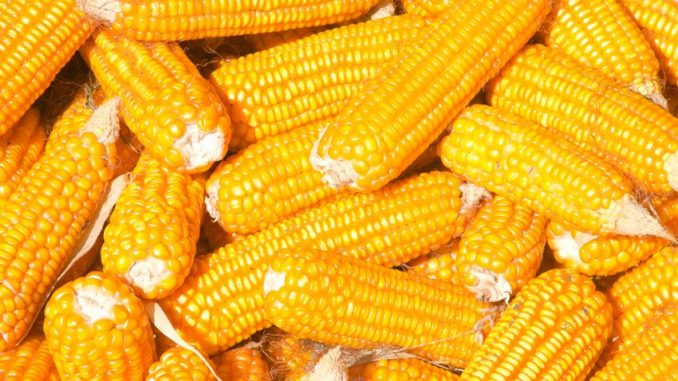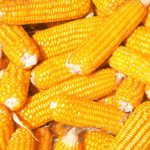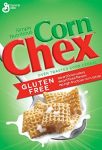
Introduction
The wet-milling of corn is a carefully controlled process. It relies on breaking corn kernels into their constituent parts which are corn oil, corn starch and fibre. Starch is the main focus of this process. This process is also very distinct from the dry-milling process of corn.
Corn (maize) is still the largest commercial source of starch. The purity of this starch can be up to 99.5%. Most of the corn grain is used in the USA as a primary feedstock for ethanol production. As well as ethanol, other products include gluten meal and feed, starch and germ. All of this comes from the wet-milling process.
The four main components are the oil, starch, corn protein and fibre. It is a water based process based on a number of steps each designed to maximise the production of each of four components.
The main feature of the process is to soak the kernels to soften them. Screening, centrifuging and washing are used to separate the milled corn before.
History Of Wet Milling Of Corn
The process has been a significant industry in the USA where maize or corn is grown. The process is well over 150 years old. It was designed originally to separate the corn kernels from the other parts which have subsequently become important materials in the food industry.
The Overall Process For Wet Milling Of Corn
The wet-milling process is designed to extract each of the components mentioned in a relatively purified form. It is a well-established process which has changed little in principle for many years although improvements are regularly made based on developments in the processing industry. Process efficiency has increased as have economies of scale because the amount of corn grown has substantially increased.
The technology of corn wet milling is discussed in the book by Paul H. Blanchard (1992) and C. Wayne Smith (2004)
Much of the separation process is based on the physical weight, shape and water solubility of each component. Water is used throughout as an extraction, separation or carrying agent. The milling quality of corn (millability) can be evaluated by using laboratory-scale milling procedures (Dimler et al., 1944, Watson et al., 1951, 1955, Zipf et al., 1959, Anderson, 1963, White et al., 1990, Steinke and Johnson, 1991, Eckhoff et al., 1993, Wehling et al 1993) that require samples of 300-1,500 g and are labour- and time-intensive.
Types of Corn Used For Wet Milling
The US Department of Agriculture stipulates that Grade 2 corn is used for wet-milling. Grade 2 corn is soft, intact and viable yellow dent corn. The kernel is removed from the cob during harvesting. This kernel is approximately 70 percent starch which is contained in the endosperm. About 10 percent is protein, mainly gluten. Four percent is oil which is extracted from the germ and the remainder which is 2 percent is fiber from the hull.
Corn usually arrives at the refiners by railcar, truck, barge and plane.
The quality control inspectors for the refiners check each corn shipment. The corn is cleaned twice to remove pieces of cob, chaff, dust and foreign materials. The corn is conveyed to storage silos, holding up to 350,000 bushels, until ready to take to the refinery for steeping as the first processing step.
Broken or cracked kernels are not used because they cause processing issues. Corn which is suited to dry milling or alkaline cooking is not desirable for the wet-milling process.
Cleaning & Drying
Corn kernels are often dried before processing. It also helps with their safe storage because the presence of moisture will allow moulds including those producing aflatoxins to be produced. The moisture content at harvest is always higher than it needs to be for storage.
Fluidized beds and cyclones are all suitable pieces of equipment for drying. Hot air with a relatively low humidity is preferred. A drying temperature of around 55ºC is ideal. Any higher and the protein in the kernel swells less during the later stage of steeping. It also holds the starch than if the grain was dried at a lower temperature or not at all. It is also the case that when the grain is dried too hot the germ becomes more pliable but rubbery. It will sink in a ground maize slurry although the process of germ separation relies on the floating of the germ. The starch also retains a much higher oil content than is desirable.
Steeping
Stainless steel tanks are used to hold about 3,000 bushels (1 bushel is 36.4 litres) of corn for 30 to 50 hours of soaking in 50°C water containing sulphur dioxide.
Sulphur dioxide in aqueous solution (0.1% to 0.2% w/w) is used in the process and is part of the corn steeping method. The corn needs to be soaked in this solution to soften the kernel and help with the release of germ, hull and fibre in the next stages but also that oil in the germ can be extracted and not contaminate the other components. The steeping is conducted in a series of tanks where the steeping water is pumped in a counter-current method.
In the steeping process, the kernels absorb water very rapidly, increasing their moisture levels from 15% to 35-40% and then more slowly to 45% and more than doubling in size. The starch granules in the kernels swell to form globules of hydrated protein. This helps in the removal of the starch which is accelerated by the sulphur dioxide added into the steeping water. The sulphur dioxide probably helps disrupt disulphide bridges in the matrix protein such as glutenin or glutelin which further helps in starch-protein separation.
Sulphur dioxide as in all processing is effective at suppressing yeast and mould growth too but is not a sterilant as erroneously reported in some notes.
Poor drying of the kernel causes the protein and any carbohydrates such as starch to form complexes. These require extra sulphuric acid treatment and longer steeping times to improve and maximize starch extraction with reduced protein contamination.
The soft whole kernels rapidly absorb the steeping solution. These produce the best yields of a high-quality starch with out any contaminating protein which is kept to a minimum of 0.3%. If the kernels are harder, longer steeping times are required and there is a reduced yield of starch extracted.
The type of maize and the age of the corn harvested has a direct bearing on the quality of the starch produced (Jennings et al., 2002).
Steep water is drained off through screens. It contains 6% solids of which there is 35% to 45% protein. It is vacuum evaporated to capture nutrients in the water for use in animal feeds and as a nitrogen-rich nutrient for later fermentation processes.
Enzyme Treatments To Improve Starch Extraction
Food processors in starch manufacture have often sought out methods to obtain complete starch extraction. It has long been an issue that not all the starch retained within the maize kernel can be obtained because its is so firmly bound to other material. One of the unused sources of starch comes from the wet-milled fibre fraction. One study shows that a protein matrix holds starch and retains 54% of the total starch retained. Confocal microscopy showed that starch granules in the peripheral region of vitreous endosperm were embedded in the protein matrix, whereas the ones in the central region were either stuck in the cell wall polysaccharides or almost free to be liberated (Ozturk et al., 2021a).
A number of enzymes might prove useful in releasing this starch from fibre as well as other components for further processing. One recent study looked at a combination of enzymes to help release more starch and also protein (Ozturk et al., 2021b) from the wet-milled fibre fraction.
A combination of Frontia Fiberwash® (Novozymes) which is a mix of arabinofuranosidase, cellulases and xylanases and Olexa® (protease) produced an increase in starch (4.5 %) and protein (3.0 %) extraction. The Fiberwash® for example is used in the Chinese corn milling industry.
The claim for Fiberwash from Novozyme is that it increases starch output by over 2% with corn gluten meal output raised by over 8%. Addition also means co-product drying energy is reduced by between 15 and 25%. That also implies energy consumption is reduced in the fibre press and the gluten press. It’s also reckoned to cut dewatering equipment loads by between 20 and 40%. the other significant claim is that the maximum grinding capacity of corn is increased between 5 and 15%. It is alsoclaimed that between 10 and 20% more Corn Steep Liquor can be passed through the fibre dryer. Again, because of better dewatering.
The starch is contained in part within a protein matrix. Destroying the protein matrix around the granule helped in the improved extraction rate of starch. Further methods to weaken the protein matrix include the use of reducing agents and acids and also ultrasound. The use of chemicals produced between a 3.3 and 5.4% increase in starch whilst ultrasound produced a 2.2% increase.
Separation Of The Germ
More traditional processors use flotation for separation of the germ. They take the ground up material of hulls, grits and germ which has been steeped and pass it down troughs where the heavier hulls and grits just settle out whilst the germ keeps flowing on through.
More modern processors use hydrocyclones (cyclone separators) that spin the low density corn germ from the slurry following steeping. These pieces of kit require less space than water troughs and are less costly to maintain. The germ is also cleaner when it is separated this way compared to flotation.
A number of passes are needed to produce concentrated fractions of germ. The underflow of heavier material contains fibre, some protein, some starch as well as water. Attempts have been made to recover this starch too albeit with mixed success.
The separated germ is pumped onto screens (reels) where it is water washed until all the starch is removed. The germ is further dewatered in squeeze presses and then dried on rotary steam driers.
This germ contains 85 percent of the oil. This dry germ can be cooked with steam before formal oil extraction.
The germ is then treated to both mechanical and solvent extraction processing to remove the oil. Favored pieces of process kit include hydraulic presses (mechanical) and large-scale industrial solvent extractors. The oil is further refined and filtered to generate what is called corn or maize oil.
The germ residue called germ meal which is left is used for animal feeds.
Grinding & Screening Of Corn
The corn and water slurry also called the degermined underflow leaves the germ separator so that a second and more thorough grind is achieved. An impact or attrition-impact mill such as an entoleter or Bauer mill respectively is used to release the starch and gluten from the fibre in the kernel.
A suspension of gluten (protein) with starch and fibre flows over fixed concave screens under pressure with an 18 to 20 mesh size. The starch and protein from the endosperm are now in a finely divided state but remain in suspension and pass through. These screens however collect the fibre and bits of hull. Any fiber which is very fine and would interfere with the separation of protein from the starch in the next stage is removed on gyrating shakers overlain with very fine nylon cloth.
The starch/gluten collected once it is through the screens is slurried and screened again to reclaim any further residual solid material. All the fibrous material retained by the screens and shaker system contains 15% starch, 21% protein, 10% fibre and 1% fat. This material is piped to a feed house for drying where it becomes a major ingredient called corn gluten feed for animals (see below).
The starch-gluten suspension which is called mill starch, is piped to starch separators.
This starch/protein suspension may still be wet screened but its density must be adjusted to about 6ºBe or 1.04 sp. gr. This may be by dewatering over string filters or Grinco filters.
Starch Separation & Corn Gluten
Mill starch is passed through a continuous high-speed centrifuge where the gluten is spun out and also used for animal feed. Flottweg and Merco (Alfa-Laval) produce typical centrifugal separators.
The Merco centrifuge is designed to meet corn starch processing needs. It is a nozzle centrifuge that is designe for heavy solids loads, continuous discharge but minimised blockage. The nozzle draw-off can be adjusted during production .
Any starch with about one or two percent protein remaining, is diluted, washed about eight to fourteen times, rediluted and rewashed in multi-stage hydrocyclones. The rewashing removes the last remnants of protein so that a very pure-grade starch is created which is over 95 percent pure. Any supernatant water is reused in the previous hydrcyclones and then filtered and dried to 10 or 12% moisture content in ovens, kilns, tunnel or flash driers. Moisture content can be reduced further using vacuum drying to 5% to 7% in the USA and about 1-2% in European processors.
The starch is dried for use as unmodified corn starch whilst some is turned into speciality starches for glue for example. Most starch is converted into corn syrups, glucose and as a feedstock for HFGS.
Corn gluten meal is used for pet food and poultry feed. Gluten has a lower density compared to starch.
Ethanol production
Ethanol is the main by-product of the wet-milling process. Wet milling is more capital intensive than dry milling and the overall ethanol yield is lower because some starch is lost in other coproducts. The overall yield of ethanol from corn via wet milling is about 440 L/t dry corn.
The starch is extracted from grain and and then used to produce ethanol via saccharification and then fermentation.
Corn Steep Liquor
Corn Steep liquor is a by-product of the corn wet-milling process. It is a viscous concentrate of corn solubles containing amino acids, vitamins and minerals. It is often used as a constituent for growth media (Liggett & Koffler, 1948). It is a great source of organic nitrogen.
Corn steep liquor has CAS number 66071-94-1 and EC Number 266-113-4
Corn Germ
Corn germ is separated, dried and sent to a germ plant for extraction of the germ oil. After the oil is extracted, the remaining feed by-product is called corn germ meal.
References
Anderson, R. A. (1963) Wet milling properties of grains: Bench scale study. Cereal Science Today 8(6) pp. 190-195, 221
Blanchard, Paul. H. (1992) Technology of Corn Wet Milling and Associated Processes Volume 4 of Industrial chemistry library. Elsevier ISSN 0926-9614 ISBN 0444882553, 9780444882554 535 pages
Dimler, R. J., Davis, H. A., Rist, C. E., and Hilbert, G. E. (1944) Production of starch from wheat and other cereal flours. Cereal Chem. 21 pp. 430-446.
Freeman, J. E. (1973). Quality factors affecting value of corn for wet milling. Transactions of the ASAE, 16(4), pp. 671-678 (Article).
Jennings, S. D., Myers, D. J., Johnson, L. A., & Pollak, L. M. (2002). Effects of Maturity on Grain Quality and Wet‐Milling Properties of Two Selected Corn Hybrids. Cereal Chemistry, 79(5), pp. 697-702 (Article).
Liggett, W and Koffler, H. (1948) Corn Steep Liquor in Microbiology. Bacteriol. Rev. December; 12(4): pp. 297
Ozturk, O. K., Kaasgaard, S. G., Palmén, L. G., Vidal Jr, B., & Hamaker, B. R. (2021a). Protein matrix retains most starch granules within corn fiber from corn wet-milling process. Industrial Crops and Products, 165, 113429 (Article).
Ozturk, O. K., Kaasgaard, S. G., Palmén, L. G., Vidal Jr, B. C., & Hamaker, B. R. (2021b). Enzyme treatments on corn fiber from wet-milling process for increased starch and protein extraction. Industrial Crops and Products, 168, 113622.
Watson, S. A., Williams, C. B., and Wakley, R. D. (1951) Laboratory steeping used in a wet milling research program. Cereal Chem. 28 pp. 105.
Watson, S. A., Sanders, E. H., Wakley, R. D., and Williams, C. B. (1955) Peripheral cells of the endosperm of grain sorghum and corn and their influence on starch purification. Cereal Chem. 32 pp. 165-182
Wayne Smith, C. (2004) Corn: Origin, History, Technology, and Production. Vol. 4 John Wiley & Sons. ISBN 0471411841, 9780471411840 949 pages.
Zipf, R. L., Anderson, R. A., and Slotter, R. L. (1950) Wet milling of grain sorghum. Cereal Chem. 27: pp. 463-473.
Revision #1. Addition of new material on quality of feedstocks.


Interesting article. Are you going to say anything about dry milling of corn ?
Nice article – need to read the white papers coming from General Mills as they have some useful stuff on corn processing as well.